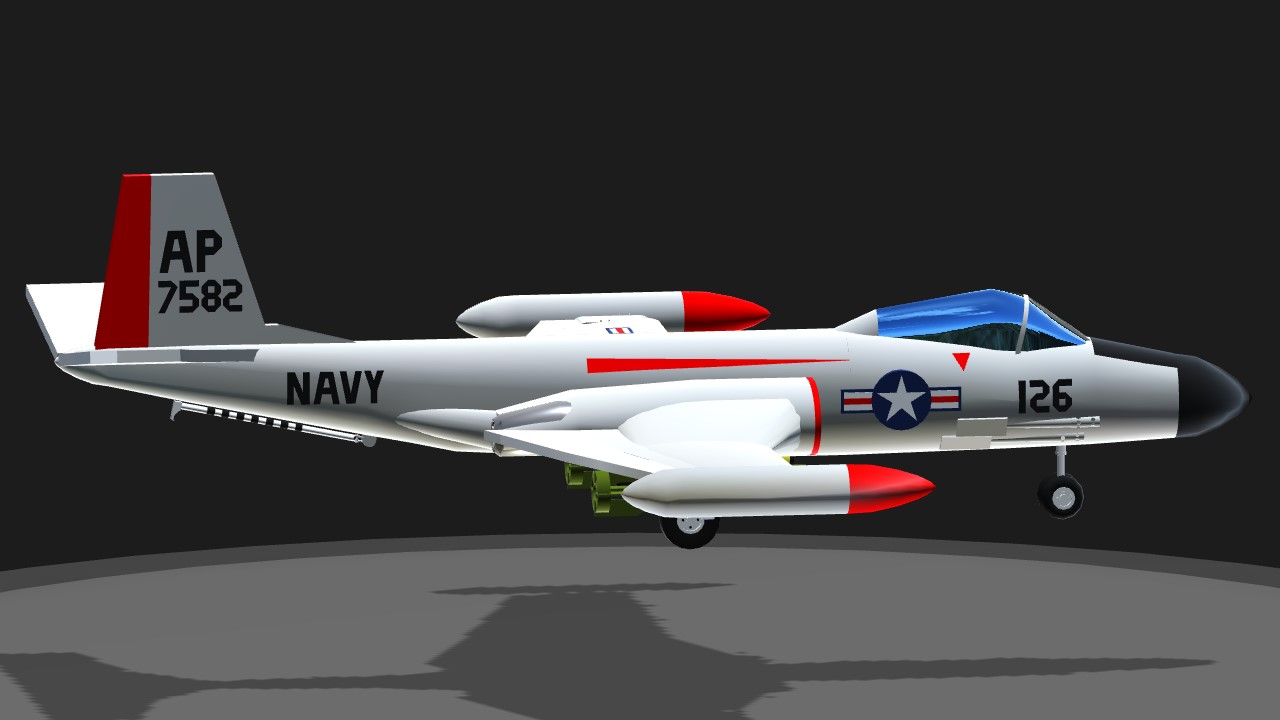

Naval aviators disparagingly called the F6U the "groundhog".

The judgment from the evaluation was that the Pirate was unacceptable for operational use. The first production F6U-1 performed its initial flight on 29 June 1949, and 20 of the aircraft were provided to VX-3, an operational evaluation squadron based at Naval Air Station Patuxent River in Maryland. The aircraft had to be disassembled and trucked to an abandoned airfield at Ardmore, Oklahoma with a runway long enough for acceptance testing. The completed aircraft were then taxied around the new plant's airfield, but the runway was deemed too short to handle jets. The airframes were built in Stratford and trucked to Dallas where government-furnished equipment, such as the engines and afterburners, were installed. ĭuring the production run, the Navy decided to move the Chance Vought factory from Stratford, Connecticut to a much larger facility in Dallas, Texas which had been vacant since the end of World War II this badly disrupted the production of the Pirate. The fuselage was lengthened to fit additional equipment and the wing had fillets added at the rear junction with the fuselage. They incorporated an ejection seat and a redesigned vertical stabilizer as well as two auxiliary fins, one towards the tip on each side of the tailplane in an attempt to improve the directional stability of the aircraft. In 1947, before the flight testing of the prototypes was completed, 30 production aircraft were ordered. To help improve the underpowered aircraft's performance, the third prototype, which first flew on 10 November 1947, was lengthened by 8 feet (2.4 m) to use a Westinghouse J34-WE-30 afterburning engine of 4,224 lbf (18.78 kN) thrust, the first United States Navy fighter to have such a powerplant. The first XF6U-1 prototype was powered by a Westinghouse J34-WE-22 turbojet with 3,000 lbf (13.34 kN) thrust, one third of the weight of the aircraft. Other changes included the addition of dive brakes on the sides of the fuselage and the replacement of the Metalite panels near the engine exhaust with stainless steel ones. The vertical stabilizer also had to be redesigned to smooth out the airflow at the intersection of the horizontal and vertical stabilizers. Flight testing revealed severe aerodynamic problems, mostly caused by the airfoil section and thickness of the wing.

Īfter a company-wide contest to name the aircraft, the initial prototype received the name Pirate and made its first flight on 2 October 1946. The empty casings of the two upper guns were retained in the aircraft, while those from the two lower guns were ejected overboard. Their 600 rounds of ammunition were carried behind the pilot.

Underneath the cockpit were four 20 mm (0.79 in) M3 autocannon. He was provided with a Mk 6 lead-computing gyro gunsight. The cockpit was well forward and was provided with a bubble canopy which gave the pilot good visibility. These were supplemented by two jettisonable 140-US-gallon (530 l 120 imp gal) tip tanks. Two fuel tanks were fitted in the center of the fuselage the forward tank, ahead of the wing, contained 220 US gallons (830 l 180 imp gal) and the rear tank, 150 US gallons (570 l 120 imp gal). "Fabrilite" was also used for the surfaces of the vertical stabilizer and rudder this was similar to Metalite but used fiberglass instead of aluminum. This was made of balsa, sandwiched between two thin sheets of aluminum. The most unusual feature of the aircraft was its use of "Metalite" for its skin. The turbojet engine was mounted in the rear fuselage and was fed by ducts in each wing root. This raised the tail up so that it could overlap the nose of the aircraft behind it, allowing more aircraft to fit into available hangar space. To fit more aircraft into crowded hangars, the nose gear could be retracted and the aircraft's weight would rest on a small wheel attached by the ground crew. The wings were short enough that they did not need to fold. The XF6U was a small aircraft with tricycle undercarriage and with straight wings and tail surfaces. Chance Vought was awarded a contract for three V-340 (company designation) prototypes on 29 December 1944. A specification was issued by the Navy's Bureau of Aeronautics (BuAer) for a single-seat, carrier-based fighter powered by a Westinghouse 24C (later J34) axial turbojet on 5 September 1944.


 0 kommentar(er)
0 kommentar(er)
